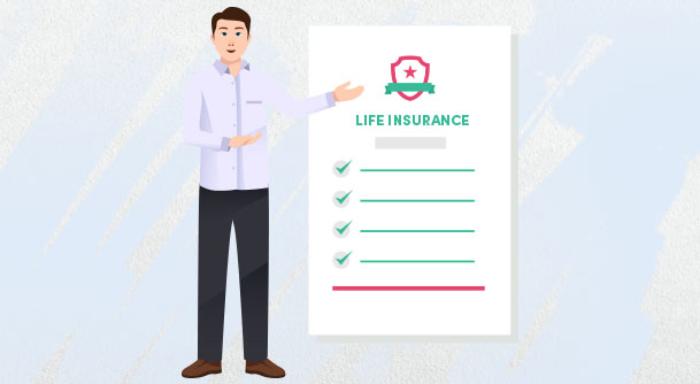Financial Plan Versus Investment Plan: A Guide for Working Professionals
Blog Title
153 |
10/5/25 6:16 AM |
Everyone wants a secure financial future. But just earning a salary isn’t enough. Managing it well is what makes the real difference. And that’s where a financial plan and an investment plan come in.
Many people confuse these two or use them interchangeably. However, they’re not the same. Let’s break down what each plan means and how they differ. We shall also understand how you can create both to secure your financial well-being.
Understanding Financial Planning
A financial plan is your overall roadmap for money management. It covers every aspect of your finances. This includes income, expenses, investments, savings, taxes, loans, insurance, and retirement planning. Think of it as a 360-degree view of your financial life. It is designed to help you reach your short-term and long-term goals systematically.
Key elements of a financial plan:
- Monthly budgeting.
- Emergency fund planning.
- Debt management (e.g., loans, credit card payments).
- Life insurance and term insurance.
- Retirement planning.
- Tax strategy.
- Estate planning (optional, but relevant for many).
For example, Rohit, a 30-year-old IT professional in Pune, earns ₹12 lakhs per annum. His financial plan ensures that:
- He saves 30% of his income every month.
- He has a ₹5 lakh emergency fund.
- He is covered by term insurance and a health insurance policy.
- He has a retirement corpus target of ₹3 crores by age 60.
The goal here is not just to invest but to manage risk, expenses, and savings in a way that supports future needs.
Understanding Investment Plan
An investment plan is a focused strategy for growing your wealth via investments. It’s about identifying your financial goals and choosing the right investment options. For example: Mutual funds, stocks, fixed deposits, ULIPs, or PPF. It is done to achieve those goals within a certain timeframe.
In simple terms, your financial plan answers what you want to achieve. On the other side, your investment plan answers how you’re going to grow your money to get there.
In simple terms, an investment plan outlines:
- Where will you invest your money? (e.g., mutual funds, real estate, stocks, ULIPs)
- How much will you invest, and for how long?
- Your risk appetite and return expectations.
- How do your investments align with your goals?
- How will you benefit from tax saving investment options? (like investing in ELSS, PPF, or NPS).
For example, your goal is to build a retirement corpus. The investment plan could include systematic investments in mutual funds, NPS, and PPF.
Or let’s say you want to save for a child’s education. You can choose Sukanya Samriddhi Yojana or a mix of equity and debt mutual funds.
Financial Plan vs Investment Plan: Key Differences
Aspect |
Financial Plan |
Investment Plan |
Scope |
Covers all aspects of personal finance. |
Focuses only on investments. |
Purpose |
Achieve overall financial well-being and goals. |
Grow wealth to meet specific goals. |
Components |
Budgeting, insurance, savings, debt, tax, investments, etc. |
Asset allocation, risk analysis, and investment tracking. |
Time Horizon |
Short, medium, and long-term. |
Usually medium to long-term. |
Focus |
Comprehensive view of finances. |
Focused view on returns and wealth creation. |
Risk Management |
Includes risk management (insurance, emergency fund). |
Focuses on risk-return balance in investments. |
Example |
Planning for your child's education, retirement, debt-free life. |
Choosing ELSS for tax saving and SIP in mutual funds. |
How Financial and Investment Plans Work Together?
In very simple words, think of your financial plan as the map and your investment plan as the vehicle. You need both to reach your destination.
Here’s how they complement each other:
- Your financial plan identifies your need for security, like building an emergency fund or ensuring your family’s safety through term insurance.
- Your investment plan then allocates funds to help you reach your goals. This can be growing money for your child’s education or your retirement.
Ignoring anyone could leave you with gaps. For example, you invest without a financial plan. This might mean you’re saving blindly without knowing how much is enough.
On the other side, having a financial plan without suitable investments means you’re not growing your money fast enough.
Create Your Financial and Investment Plan in Easy Steps
Step 1: Assess Your Current Financial Position
Start by listing your expenses, income, assets, and liabilities. Then, calculate your net worth and monthly cash flow.
Step 2: Set Clear Financial Goals
Define what you want to achieve. Is it buying a house, funding your child’s education, or retiring early? Then, categorise them as:
- Short-term (1-5 years).
- Medium-term (5-10 years).
- Long-term (10+ years).
Step 3: Build Your Financial Plan
Create a budget and track expenses. Set up an emergency fund (3-6 months of expenses).
- Additionally, get adequate term insurance and health insurance.
- Plan for tax savings using Section 80C options like PPF, NPS, ELSS, and ULIPs.
- Manage and reduce high-interest debt.
Step 4: Develop Your Investment Plan
Diversify your portfolio to balance risk and return. Assess your risk appetite. Is it Conservative? Moderate? Aggressive?
Choose the right mix of investment products:
- For safety: PPF, EPF, FDs, RDs.
- For growth: Mutual funds, stocks, ULIPs.
- For tax saving: ELSS, NPS, PPF, ULIPs.
Step 5: Review and Adjust Regularly
Make sure you review your financial and investment plans at least once a year. You can even do it after major life changes (marriage, job change, children). Then, accordingly, rebalance your investments if your goals, income, or risk profile change.
Step 6: Stay Disciplined
Automate savings and investments (SIPs, recurring deposits). Try to avoid impulsive withdrawals or investments based on market rumours. Just stick to your plan.
Takeaway
As a working professional, managing your money wisely is no longer optional. It’s a necessity. A well-crafted financial plan gives you control. A thoughtful investment plan gives you growth. So take the time to build both.
You don’t need to be a finance expert. Be honest about your needs. Stay consistent with your actions. And always update yourself with the changes.





